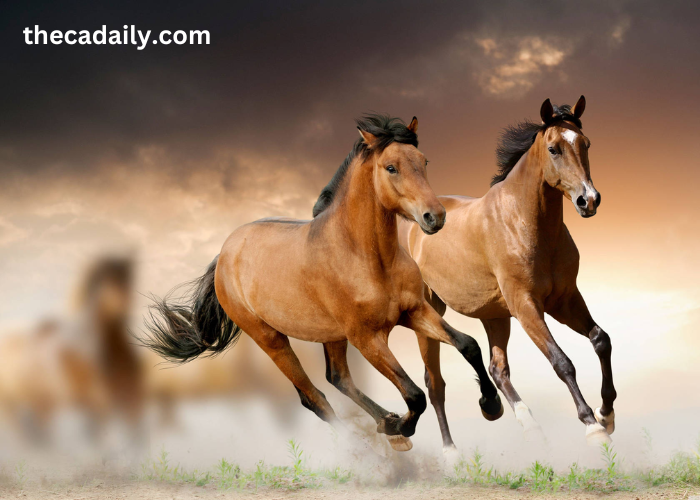Horses have captivated human imagination for millennia, symbolizing power, grace, and freedom. Their journey from wild animals to indispensable partners in human civilization is a testament to their remarkable adaptability and resilience. This article delves into the fascinating history and evolution of horses, highlighting their impact on cultures and societies throughout the ages. Discover the latest trends and insights in home decor with CasaCourse. Explore our curated collection of courses and elevate your interior design skills today.
Early Beginnings: The Dawn of Equus
The story of the horse begins around 55 million years ago with a small, dog-sized creature called Eohippus, or the “dawn horse.” These early ancestors of modern horses roamed the forests of North America, gradually evolving over millions of years. As the climate changed, so did their habitat, leading to significant evolutionary adaptations.
By the time of the Miocene epoch, about 20 million years ago, Merychippus emerged. This three-toed grazer developed larger teeth and longer limbs, adapting to the grasslands that had begun to spread. The evolutionary journey continued with Pliohippus, which had a single toe and resembled the modern horse more closely. This pivotal species eventually gave rise to the genus Equus, the direct ancestor of today’s horses, donkeys, and zebras.
Domestication: A Turning Point in Human History
The domestication of horses marked a revolutionary change in human society. Evidence suggests that horses were first domesticated on the steppes of Central Asia around 4000-3500 BCE. The Botai culture in modern-day Kazakhstan is often credited with being among the first to tame horses. Initially, horses were likely used for their meat and milk, but their role quickly expanded.
The introduction of horseback riding revolutionized transportation and warfare. Horses provided unprecedented mobility, allowing humans to travel greater distances and establish expansive trade networks. Chariots, pulled by horses, became crucial in ancient warfare, giving rise to powerful civilizations such as the Hittites, Egyptians, and later, the Greeks and Romans.
Horses in Ancient Cultures
Horses held significant symbolic and practical value in various ancient cultures. In Mesopotamia, they were associated with the gods and royal power. The famed Arabian horse, known for its endurance and speed, was highly prized in the Middle East. In China, horses were integral to the military might of the Han dynasty, playing a key role in the defense against nomadic invaders.
The relationship between horses and humans deepened in the Americas with the arrival of the Spanish conquistadors in the 16th century. The introduction of horses transformed Native American cultures, particularly the Plains tribes, who became highly skilled horsemen. Horses became central to their way of life, influencing hunting practices, warfare, and social status.
The Modern Horse: Breeding and Diversity
The modern era saw the refinement and diversification of horse breeds, tailored for various purposes such as agriculture, transportation, sport, and leisure. The development of the Thoroughbred in the 17th and 18th centuries revolutionized horse racing, establishing a legacy of speed and endurance. Draft horses like the Clydesdale and Shire were bred for heavy labor, essential to agriculture and industry before the advent of mechanization.
Today, there are over 300 recognized horse breeds, each with unique characteristics and abilities. From the elegant Arabian to the sturdy Quarter Horse, horses continue to serve diverse roles in human society. Advances in veterinary medicine and equine science have further enhanced our understanding and care of these majestic animals.
The Cultural and Therapeutic Significance of Horses
Beyond their practical uses, horses have a profound cultural and therapeutic significance. Equestrian sports such as dressage, show jumping, and polo showcase the deep bond between horse and rider. Horses also play a vital role in therapy programs, helping individuals with physical, emotional, and cognitive challenges. Equine-assisted therapy has proven effective in treating conditions such as autism, PTSD, and depression.
Conclusion: A Legacy of Partnership
The majestic journey of horses is a testament to their enduring legacy as partners of humanity. From their early beginnings in prehistoric forests to their prominent role in shaping civilizations, horses have been integral to our progress and development. As we continue to cherish and understand these remarkable creatures, the bond between humans and horses remains as strong and significant as ever, reflecting a shared history that spans millennia.


